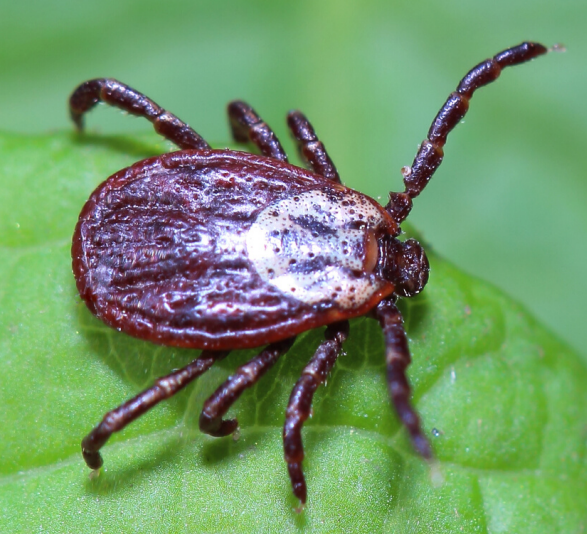Protect Your Pet
You can avoid many risks to your pet by being proactive with their care. Vaccinations, testing, and prevention keep your pet healthy and may help avoid costly veterinary care in the future. Read more below about the necessary care your pet needs to remain healthy year-round.
-
Vaccine Timetable for Dogs
Rabies (required by law)
Begin at 12-16 weeks of age for puppies.
After a puppy has completed their 1st year, they qualify for a 3-year rabies booster.
Canine Distemper/Parvovirus (DA2PP)
Begin at 8 weeks of age.
Boosters are given every 3 weeks until 5 months of age.
One year later, booster again with a 3-year DA2PP vaccine.
Bordetella (kennel cough)
Given as an injection under a dog's skin or through their nose, based on what they can tolerate. Puppies begin between the ages of 6-8 weeks. A second injectable booster is given 4 weeks later.
Booster with intranasal once a year.
Influenza (Vivalent)
Begin at 12 weeks old with a second 3-6 weeks later.
Annual booster after their 1st year is complete.
Leptospirosis (Bacterial Disease)
Begin at 12 weeks old with a second 3-6 weeks later.
Annual booster after their 1st year is complete.
-
Vaccine Timetable for Cats
Rabies (required by law)
Begin at 12-16 weeks of age for kittens.
After a puppy has completed their 1st year, they qualify for a 3-year rabies booster.
Feline Distemper (FVRC-P)
Begin at 8 weeks with boosters every 3 weeks until 15 months of age.
After a kitten has completed their 1st year, they qualify for a 3-year FVRC-P booster.
Feline Leukemia (FeLV)
Begin at 12 weeks old with a second 3-6 weeks later.
-
Although Heartworm is largely associated with the spring and summer months as it is transmitted by mosquitoes, your dog can be at risk year round! That's because once infected, Heartworms can take up to six months to fully mature and begin causing serious problems. Dogs should be given monthly Heartworm preventative to ensure they remain Heartworm free, even in the "off" season. If your pet is experiencing any symptoms of Heartworm, reach out to your vet ASAP: 🔹️Persistent Cough 🔹️Fatigue/Lethargy 🔹️Decreased Appetite/Weight Loss Remember to have your dog tested annually for Heartworm to make sure they are happy and healthy all year long! The American Heartworm Society has great information regarding heartworms, please see www.heartwormsociety.org
-
It’s a Flea World for Pets - Protect Them Year-Round!
Fleas are not just a summertime nuisance, that’s why we want to stress that you treat your pet all year long. Flea eggs can live in the cracks of your floor and in your carpet. It takes up to a year for them to hatch.
Where do you look for fleas on your pet?What do fleas look like?Dark reddish-brown
Flattened side to side
1/12-1/6 inch long

They are found anywhere on your pet’s body, but the most common area is over the back third of their body.
Did you know?- If one pet has fleas, they ALL have fleas; no matter what you see or think.
- One female flea can lay 40-50 eggs per day. Those eggs fall off into the environment.
- Before developing into an adult flea, flea eggs can lay dormant for as short as 14 days and as long as one year before they hatch into adult fleas.
- All pets MUST be treated at the same time.
- Flea control should be used monthly all year round. We recommend talking with your veterinarian about which product is best for your pet(s).
- Vacuuming daily including carpets, hardwood floors, and under sofa cushions helps to reduce the number of flea eggs in the environment.
- Clean pet carriers before and after use.
- Wash throw rugs and your pet bedding regularly.
- If needed, use an indoor premise spray (type of insecticide) for the house as directed on the label.
- If an outdoor spray is needed, use Bayer Advanced Complete Insect Killer to do the trick, as directed on the label.
-
It’s Always Tick Season - Protect Them Year-Round!
Ticks are most active between March and November. Historically, areas of the United States with more moderate temperatures don't see the same annual drop in tick activity that colder regions do. Without temperatures dropping below zero, ticks remain active and continue searching for food.
Did you know?- They vary in earth tone colors with dark legs
- Flat broad oval or round
- 1/8 inch long
- Found throughout the US, including the Midwest
- Ticks are around all year long; their activity varies depending on warm or cold weather, but they are always around.
- Even indoor dogs that spend little time outside can pick up ticks. Dogs that go camping, hiking, and hunting are potentially at greater risk for coming across ticks.
- Ticks carry various diseases, including Lyme disease, Ehrlichiosis, Rocky Mountain spotted fever, Babesia, and Anaplasmosis.
- Ticks like tall grasses, downed brush, and leaves.
- If your pet is picking up ticks from their environment, people may be as well and are at risk for tick-borne diseases, so check yourself too.
- If your pet has had ticks or you are concerned about ticks, it’s best to speak with your veterinarian about what product is best to use.
- Year-round tick prevention is recommended for all dogs and cats.
Prevention
Prevention avoids many risks to your pet. Be proactive.
Visit our Community Medicine Days page to learn more about how we can help you protect your pet today!



